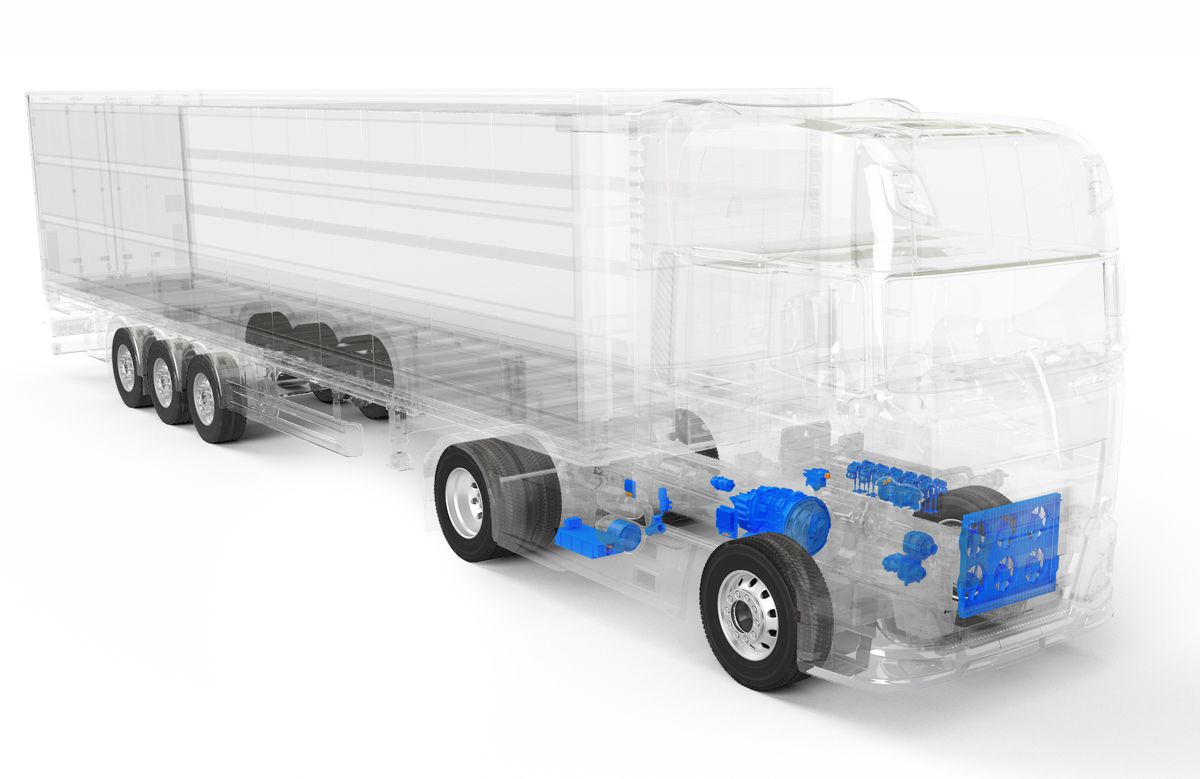Eaton highlights sustainability technology at IAA Transportation show
Power management company Eaton will display its Vehicle Group’s innovative portfolio of internal combustion solutions for commercial vehicles Sept. 20-25 at the IAA Transportation show in Hannover, Germany.
“Although the transition to electrification is progressing, OEMs continue to seek improvements in fuel emissions and consumption for internal combustion engines,” said Traci Melville, senior vice president and general manager, Global Products, Eaton’s Vehicle Group. “In fact, according to KGP Powertrain Intelligence, there will be more than 30 million commercial vehicles produced with a diesel engine over the next decade.”
Variable Valve Actuation technologies are flexible, reduce emissions
Eaton’s Variable Valve Actuation (VVA) solutions are flexible and adaptable to any valvetrain architecture, allowing OEM customers to implement one or multiple functions that can significantly reduce carbon dioxide (CO2) and nitrogen oxides (NOx) emissions and lower fuel use.
Cylinder deactivation keeps selective catalytic reduction (SCR) at optimal temperatures by operating just two or three cylinders rather than all six in light-load conditions. That effectively delivers higher exhaust temperatures from the functioning cylinders at low speeds and loads or when the truck is neutral coasting, two conditions that can quickly cool aftertreatment systems. Concurrently, cylinder deactivation also lowers fuel consumption.
Late intake valve closing improves the engine’s thermal efficiency, enabling a higher compression ratio, which reduces CO2 emissions and increases exhaust gas temperature that contributes to aftertreatment performance.
TVS EGR pump more controllable than competitive offerings
Eaton’s positive-displacement TVS® exhaust gas recirculation (EGR) pump enables the use of a high-efficiency turbo to reduce engine pumping losses and increase fuel economy.
The TVS® EGR pump is driven by a 48-volt electric motor, making it completely independent from engine speed and significantly more controllable than pumpless EGR systems.
Decompression engine brake compact, integrates into small engines
Eaton’s decompression engine brake technology enhances brake power in the full engine operating range and is compact for easy integration into smaller engines.
Eaton’s engine decompression brake is a valvetrain system with a mechanism to quickly switch between driving and engine braking mode according to customer requirements and can be integrated into a standard assembly.
Eaton’s valves operate in demanding engine applications
Eaton offers a portfolio of differing valves, including monometallic and bimetallic, solid and hollow sodium cooled, seat faced and coated, providing a suitable solution for all vehicle applications. Eaton is developing new valve technologies for future commercial vehicles, including those with hydrogen internal combustion engines (ICE).
Unlike traditional diesel-powered commercial vehicle engines, hydrogen ICE powertrains can operate dry combustion at extremely elevated temperatures depending on engine calibration.
Eaton is leveraging its nearly 100 years of experience in valve production to support hydrogen applications and the next generation of diesel engines. One possible solution is a sodium-filled hollow valve, which enables internal cooling. Wear protection is ensured by selecting the proper materials and coatings among the several grades available in Eaton’s portfolio.
Eaton, Tenneco offer exhaust thermal management system to reduce emissions
Eaton and Tenneco launched a joint development agreement between Eaton’s Vehicle Group and Tenneco’s Clean Air business to produce an integrated exhaust thermal management system that enables commercial truck manufacturers to meet upcoming emissions regulations.
The integrated exhaust thermal management system provides heat directly to the vehicle’s aftertreatment system, which is essential for reducing harmful exhaust emissions. Eaton’s electrically driven TVS® blower precisely controls the airflow so the system can maintain optimal aftertreatment temperatures.
48-volt electric catalyst heater controller provides precise aftertreatment control
Eaton offers an air-cooled electric catalyst heater controller as part of its broader 48-volt electrical system portfolio. It contains several technologies that allow manufacturers to integrate 48-volt architectures into next-generation commercial vehicles.
The controller manages the power delivered to the aftertreatment heater and is designed to receive commands from the aftertreatment system and provide soft-start and soft-stop capabilities for maintaining system voltage control.
48-volt DC-DC Converter for dual-voltage electrical systems
Eaton is developing a DC-DC Converter for 48V system architectures that will enable future powertrains to comply with new emissions regulations and provide higher levels of electrical power for CO2 reduction and autonomous driving systems.
Unlike competitive offerings, Eaton’s DC-DC converters are operational in ambient temperatures up to 85 degrees Celsius and boast 97% design efficiency.
Supercapacitors for 48-volt system power storage
Eaton has a current portfolio of supercapacitors for use in commercial vehicle applications, including 48V commercial vehicle systems. In addition, Eaton is developing advanced technology to further increase the level of power and energy storage capacity in these products.
Supercapacitors can quickly charge and discharge at higher rates than lithium-ion batteries. While the size and weight are comparable to lithium-ion packs, supercapacitors don’t retain high levels of energy in comparison, do not require a liquid cooling system and have a longer cycle life.




















